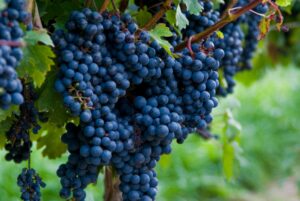Emiliana Vineyards models its management practices on nature. For HR and strategy, they ask: What would nature do?
What if the planet gave management advice?
Resulting companies might look like Emiliana Vineyards, the world’s largest organic winery and winner of the global Green Winery of the Year award.
Emiliana looks to nature for every aspect of its management strategy, from human resources to strategy. The result may be a new standard for sustainability – and business success.
Emiliana’s sales are growing 20 to 30 per cent annually. The company meets or exceeds a host of sustainability standards, including Fair Trade and Fair for Life. And it’s full of energy. “It’s a company that’s fun to be around,” says Dr. Pablo Munoz, a researcher studying the company with his colleague Dr. Vesna Mandakovic.
What Managing by Natural Principles Looks Like
Many companies are organic. Some are even biodynamic, like Emiliana. Biodynamic agriculture views a farm as a closed ecosystem, with different parts supporting each other. A magazine profile describes Emiliana’s vineyards: “hens, geese and alpacas [roam] the vineyards, and [the company] sows flowers between the vine rows.” The animals provide manure, and the flowers attract beneficial insects.
But Emiliano also builds natural principles into more traditional areas of management, such as human resources, decision-making, and corporate identity. Here’s how they do it.
1. Organizational Chart = Family Tree
At Emiliana, human resources is seen as managing family relationships.
José Guiliasti, the company founder, said: “You have to be close to the workers, to know what they need and what they demand…. If in a family everything operates based on agreements, on dialogues, why should it be different in a company?”
In practice, that perspective means a relationship that’s close and personal, and lifelong.
Sebastian Tramon, Emiliana’s sustainability manager, explained: “the General Manager walks through the fields and talks with the workers to know firsthand what is happening. A communication is established that perhaps does not have as much formality but it has closeness.”
Workers receive a fair wage and their own gardens; they also manage a fund for community projects.
As in a family, the workers are aging. The company recognizes their reduced productivity, but won’t fire them. Instead, a secretary has been reassigned to drive workers to health appointments.
Munoz describes the motivation: “The word that keeps coming out is care. About bringing humanity back to business.”
2. Decisions Adapting to the Environment
Emiliana’s leaders improvise and adapt, instead of having a fixed strategy. As in a natural system, plans are always shifting. “An MBA graduate would find an artificial optimal state, a way of making the company efficient,” says Munoz. “Here, the firm naturally finds its own equilibrium by adapting to challenges.”
Decision-making involves ongoing experiments and, sometimes, a wait-and-see attitude. For example, the company hasn’t decided on a long-term approach to managing its older workers. Instead, the company gradually adapts to their needs. “We’re not at the stage of a long-term plan yet,” one manager explained, “Right now, the workers are ill, so we are helping them.”
Emiliana’s many environmental and social certifications provide the company with a basic structure of necessary actions. But as the company charts its path, it’s often hiking without a map. At some companies, that lack of certainty would be unmanageable. At Emiliana, says Munoz, “It seems to be chaos, but it works great, just like nature.”
3. Identity Rooted in the Land
Come to Emiliana’s headquarters in Santiago’s financial district, Sanhattan. Enter the high rise office, and you’ll see pictures of the vineyards. The land is the heart of Emiliana. The company “exists in the fields,” one manager said. Vineyard workers physically experience the land, touching and smelling it; they understand that Emiliana has no separate identity. A manager explains: “It’s hard to understand the company in the headquarters office, without [having] visited the fields.” The pictures are one way of making the link; high rise workers also frequently visit the vineyards, to build the same physical connection.
Storms and Calm
Emiliana’s path to success has sometimes been stormy. Sustainability manager Sebastian Tramon describes the journey:
“Emiliana’s change has been progressive over 18 years. In the beginning we struggled with costs and decreasing production, but then the system started balancing out as we reduced the use of inputs, and production and quality increased. We also had problems selling our wines when we first went organic because there wasn’t the same demand for such products as there is today. Then awareness and markets changed and the demand grew.
“Now we can say that it was totally worth the effort. The change from a 1,000-hectare conventional vineyard to one that is 100% organic and biodynamic has proven over the mid-term to be good business—it wasn’t fast or easy, but it’s definitely more sustainable.”
Tensions exist between managers and shareholders, with shareholders pushing for financial returns. But shareholders don’t interfere in the company’s management practices, recognizing the quality results they achieve.
Lessons for Other Planetary Enterprises
What can Emiliana teach other companies?
Mandakovic says: “We’re still trying to understand how to move learning from Emiliana to another company.” The fluid decision-making style, in particular, could be challenging to adopt. “If you just tell a company to improvise,” says Munoz, “they would go nuts.”
Mandakovic and Munoz are working with Emiliana’s owners and employees to understand their processes and how other organizations can use them. The research project is currently in its second year; as insights and recommendations emerge, NBS will share them.
More about Emiliana
Interview with sustainability manager Sebastian Tramon
Questions for Vesna and Pablo?
Do you have a question about Emiliana’s model? Share it with NBS, including “Emiliana” in the subject line, and the researchers will try to respond.




Add a Comment
This site uses User Verification plugin to reduce spam. See how your comment data is processed.This site uses User Verification plugin to reduce spam. See how your comment data is processed.